10 books to get you started with the Science of Reading
Top 10 Science of Reading podcasts to get you started
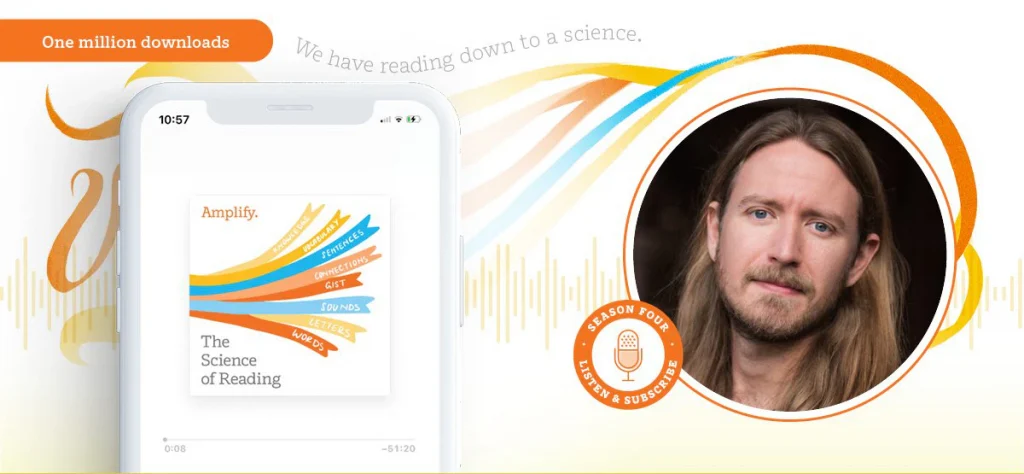
Since 2019, Science of Reading: The Podcast has delivered the latest insights from researchers and practitioners in early reading. Hosted by Amplify’s Chief Academic Officer Susan Lambert, each episode welcomes a renowned leader in the education and literacy community, explores a timely topic related to the Science of Reading, and offers instructional advice to educators implementing evidence-based practices in their schools.
New to the podcast? Here are 10 popular episodes to acquaint yourself with the Science of Reading. Listen, enjoy, and subscribe — we have new episodes every other Wednesday!
S1-E1: Natalie Wexler on “The Knowledge Gap”
Susan hosts Natalie Wexler for a deep dive into her latest book, The Knowledge Gap: The Hidden Cause of America’s Broken Education System—And How to Fix It, and a discussion of the lack of equity in reading education among students, the benefits of knowledge-rich curriculum inside and beyond the classroom, why it’s important to build background knowledge while teaching foundational skills, and why professional development doesn’t seem to be making a difference and how it can be improved.
S1-E3: Emily Hanford on reporting on education and the Science of Reading
Susan sits down with Emily Hanford, education reporter and host of the Education Post podcast, to examine the big takeaways from her experience reporting on dyslexia and the patterns that emerged in her investigation; why reading instruction isn’t more aligned with the Science of Reading; and the evolution of whole language, balanced literacy, and phonics instruction.
S1-E8: Tim Shanahan on evidence-based literacy practices
Reading expert Tim Shanahan discusses his view on teaching reading, including an explanation of the four crucial things you need to teach reading, and what it means to really do a “close read” in literature.
S3-E1: Dr. Jane Oakhill on Scarborough’s Reading Rope
Dive into the first episode of our Deconstructing the Rope series as Dr. Jane Oakhill, professor of experimental psychology at the University of Sussex, provides an overview of Scarborough’s Reading Rope. She also emphasizes the importance of inferencing in comprehension, why the Simple View of Reading is still relevant almost 40 years later, and how each element of the Rope comes together to deconstruct the complexity of reading.
S3-E3: Dr. Louisa Moats on decoding
Join Dr. Louisa Moats, President of Moats Associates Consulting, as she unwinds decoding, a strand of Scarborough’s Reading Rope. In the third episode of our Deconstructing the Rope series, Louisa highlights the significance of decoding in the Science of Reading and discusses the value of becoming students of our own language. She also explains the reciprocal relationship between decoding and encoding and why both are essential to provide effective phonics instruction to children in the classroom.
S2-E7: Sonia Cabell on research, comprehension, and content-rich literacy instruction
Join Sonia Cabell, Assistant Professor of Education at Florida State University, as she shares findings from her research trials on content-rich literacy curricula and whether activating students’ background knowledge alongside explicit phonics instruction is more effective than traditional approaches. She also explains what constitutes “compelling evidence” in the Science of Reading and why students need to interact with both written and spoken language while learning to read.
S3-E5: Dr. Bruce McCandliss on sight recognition
Join Dr. Bruce McCandliss, Professor at the Graduate School of Education of Stanford University, as he unwinds sight recognition, a strand of Scarborough’s Reading Rope. In the fifth episode of our series, Bruce explains the role of sight and word recognition in the Science of Reading and highlights the importance of the rapid integration of print, speech, and meaning. He also encourages listeners to be cognizant of the ever-changing technological learning environment while nurturing young readers and writers.
S2-E1: Dr. LaTonya Goffney on a district-wide SoR adoption
Join Dr. LaTonya Goffney, Superintendent of Schools for Aldine Independent School District in Texas, as she recounts her two-year journey with her team of district educators to adopt a new early literacy curriculum. Hear how they successfully challenged the traditional adoption process, studied the science of teaching reading, analyzed student data and experiences, and developed a district-wide set of beliefs and expectations.
S3-E7: Maria Murray on The Reading League’s Defining Movement
In this special episode, Dr. Maria Murray, President, and CEO of The Reading League analyze the intricacies of literacy instruction and shares common misconceptions that educators have about the Science of Reading. She also explains why the Science of Reading: A Defining Movement coalition was founded: the belief in a clear understanding of what the Science of Reading is and what it is not, in order to promote the proper use of instructional practices aligned with its findings.
4 tools to help teachers better understand dyslexia
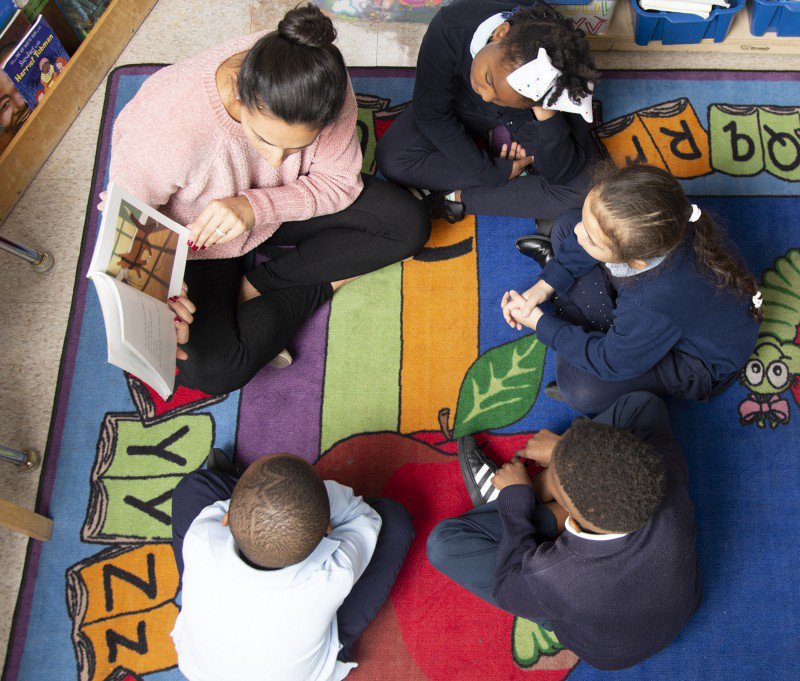
Despite variations in terminology, many professionals still consider dyslexia to be synonymous with the term “reading difficulty.” But a growing interest in the subject and a resurgence of the term in literacy research is increasing awareness of dyslexia’s neurobiological origins.
With things changing fast, it can be difficult to stay up to date on the latest research and instructional practices surrounding dyslexia. In this blog post, we’re providing four amazing reading materials to improve your understanding and ability to support struggling readers.
Defining dyslexia
Dyslexia is a critical topic in education these days — but what is it? This article from the Orton Gillingham Online Academy breaks down the International Dyslexia Association’s definition of dyslexia and what it means for students with this “hidden disability:”
“What is Dyslexia? Part 1” by Lorna Wooldridge
Dyslexia in your classroom
Students with dyslexia make up 15–20% of the school-age population, and are likely to be in every classroom. These fascinating statistics show just how present dyslexia is in the student population:
“Most Reading Difficulties Can Be Resolved or Diminished” by Carolyn Cowen
Dyslexic brains are wired differently, but intensive reading intervention can rewire them. Read about how science and technology are being used to understand what’s happening in a brain with dyslexia:
“How Science Is Rewiring the Dyslexic Brain” by Gabrielle Emanuel
Dyslexia: Fact and fiction
We know more about dyslexia now than ever before?—?can you distinguish between fact and fiction? Uncover the truths and myths of dyslexia now:
Dyslexia and developmental trajectories
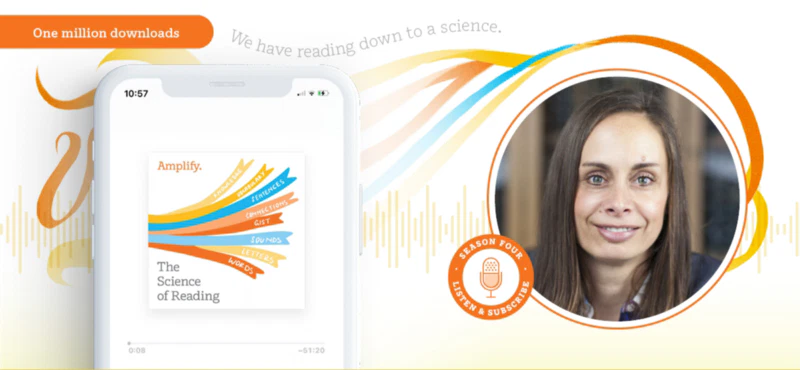
Welcome back to Science of Reading: The Podcast!
As educators, we’re often reminded of the importance of early intervention, but hear little about the science behind it. What happens when students aren’t identified as at-risk for reading difficulty early enough? What about when they are and receive intervention? And importantly, how does this all connect to dyslexia?
We want to make sure that we find everyone who is struggling with learning to read and make sure that everyone gets to experience the joy of learning to read.
— Dr. Nadine Gaab
In this episode, Susan Lambert joins Dr. Nadine Gaab to discuss dyslexia and the developmental progression of the brain, and the behavior of students as they learn to read. Dr. Gaab, an Associate Professor of Education at the Harvard Graduate School of Education, focuses on both typical and atypical learning trajectories from infancy to adulthood, with a special emphasis on language and reading development and the role of the environment in shaping these trajectories. Dr. Gaab provides further insight into these developmental trajectories in this episode, especially as they relate to early intervention for at-risk students. She differentiates between early diagnosis of dyslexia versus early identification of at-risk students, adding nuance and complexity to the discussion of dyslexia by emphasizing the ways educators can ensure that all students experience the joy of learning to read.
Tune In Below!
For more wisdom and research on the best ways to teach reading, subscribe to Science of Reading: The Podcast.
The 5 patterns we found in schools with improved reading
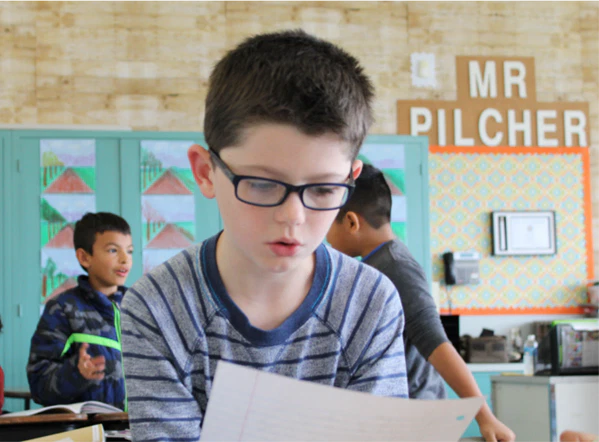
After a decade of tracking students’ pathways in early reading, we’ve been able to identify the schools getting outsized results—so we called them to ask what they’re doing! And so far, we’ve identified five consistent patterns.
1. Start early.
Schools that deliver the strongest results work hard to get kids on track — and often ahead — in kindergarten. Why? Those who get through the decoding stage by age eight begin building vocabulary and background knowledge through reading itself. These schools reason that it’s easier to get students ahead from the start than to try to catch them up later.
2. Surround kids with books.
Reading at the right level improves decoding, vocabulary, knowledge, and stamina. In a recent study, 11 students who read an extra seven minutes per day in class had substantially higher reading rates than other students. Those minutes add up to 160,020 additional words read each school year, and reading volume is important in building knowledge—even more so than cognitive ability.
3. Measure.
All schools collect data; the best ones think of it as measurement. For instance, they measure whether an intervention is having the expected impact. If not, they introduce new, temporary measures for attendance, perhaps, or fidelity of implementation. They are constantly tinkering and learning. They describe themselves as never satisfied.
4. Create a support team.
One of the most effective practices we found is ensuring that students get extra support when they need it. Classroom teachers can have a hard time reaching everyone, even with the best intentions. A cross-classroom team can base its decisions on careful data analysis and do whatever it takes to ensure extra resources are found and allocated where they’re needed most.
5. Beat summer.
Summer is brutal. Students often lose as much as half of their hard-won gains from the school year over the summer weeks, and the loss is especially steep for students from lower-income households. But even a few minutes a week of reminder exercises can reverse these losses, just as using a muscle prevents atrophy.
Reading at a college-entry level is a virtuoso performance. Even reading on level by third grade requires a constellation of successes — from mastering the sound-spelling patterns of English, to the painstaking accumulation of vocabulary and knowledge necessary to make sense of sentences. The simple verb to read hardly feels adequate to describe what students are doing when they make sense of the text. Ensuring the effortless enjoyment of reading for all is one of the great social undertakings of our time. We’re so happy to be working toward this noble goal with you.
What does problem-based math learning unlock for students? Part 1
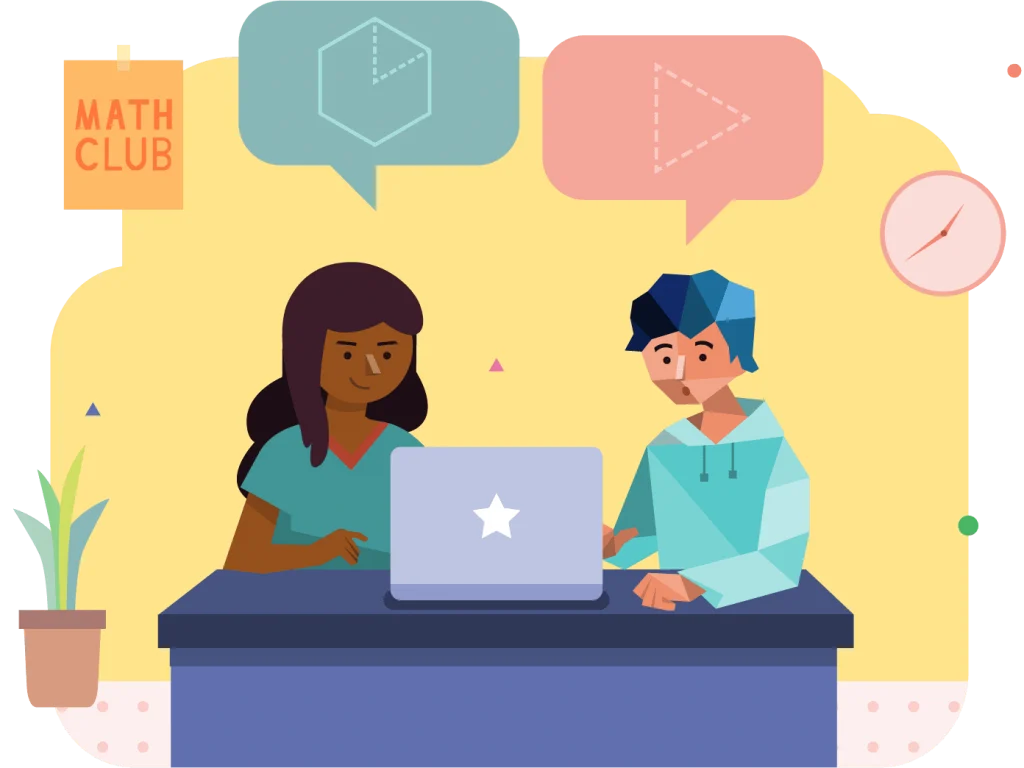
Webinar series recap, part 1 of 3
Problem-based math learning helps teachers set the stage for memorable learning experiences and transfer the responsibility for the learning to students, which has been shown to help develop students’ problem-solving and math reasoning skills.
Our webinar series explores how this type of instruction engages all students in grade-level math every day, and how instructors can go about implementing problem-based learning in the classroom. In part 1 of the webinar series, award-winning teacher Kristin Gray asks—and answers—the question: What does problem-based learning unlock for students?
Experience and explanation form a learning cycle
Imagine you’ve just gotten a new piece of technology: a phone, a TV, a computer. How do you learn to use it? Do you read the entire user guide first? Jump in and never touch the guide? Or turn it on and try some things, referencing the guide as needed?
If the last option sounds like you, that’s very common—and it’s an example of learning through problem-solving.
“It’s something we naturally do,” says Gray. “We’ve had a phone before so we would pick up this new phone and try doing things that we know worked on our last phone, and then we would experiment: Does it work the same on this phone? This bouncing between experience and explanation is really the foundation of how we learn through problem-solving.”
What learning through problem-solving looks like in the math classroom
If we think of instructional methods in the math classroom along a spectrum, on one end we might have a classroom where students are left to solve a problem and discover the relevant math on their own. On the other end, the instructional method might be to show students how to get the answer and then practice doing similar problems.
The methods at both extremes are challenging, and it’s hard for instructors to go from one to the other, says Gray. “We need to install a soft landing space in the middle of these extremes—and we can think of that space as learning through problem-solving, or problem-based learning.”
What does that look like in the math classroom?
Students will tackle interesting problems, raise questions about the math required, receive an explanation, and apply it back to the problem—as with the example of learning new technology.
“When we show students how to get the answer, we send the message that math is solely about answer-getting and learning processes. Answers are important, but we want to use problems to teach the math, not just teach students to get the answer,” says Gray.
Practice is also key, she adds: “This place in the middle pulls the best from both extremes and puts them into a structure that supports teachers in teaching and students in learning.”
Why students should learn through problem-solving
Learning through problem-solving has the potential to engage all learners in math, says Gray. It influences the way teachers and students think of themselves as mathematicians and what it means to know and do math.
In the 2000 NAEP survey, 70 percent of fourth and eighth graders reported that they enjoy activities that challenge their thinking, and enjoy thinking about problems in new ways.
“Students are already naturally curious and like solving challenges and trying things in new ways, so that’s a great start,” says Gray.
“No matter how kindly, clearly, patiently, or slowly teachers explain, they cannot make students understand,” says Gray. “Understanding takes place in the student’s mind as they connect new information with previously developed ideas. Teachers can help, but understanding is a by-product of solving problems.”
Add understanding is motivating. It inspires perseverance and confidence. It supports making connections, not learning concepts in isolation.
When students are given a new problem and are able to use prior knowledge to help solve it, that “promotes the development of autonomous learners,” says Gray.
How Amplify Math supports problem-based learning
Amplify Math supports teachers in the planning and delivery of problem-based lessons. It also enables teachers to monitor student progress and differentiate instruction based on real-time data.
Lessons start with warm-ups that tap into prior knowledge and move into problems that require collaboration to solve. Teachers monitor, engage, and ultimately synthesize student work into the main idea. There are also ample opportunities for practice and reflection.
Learn more about Amplify Desmos Math.
Register to watch the rest of the series here.
Visit Gray’s site, Math Minds, here.
Building resilience through routine, relationships, and regulation
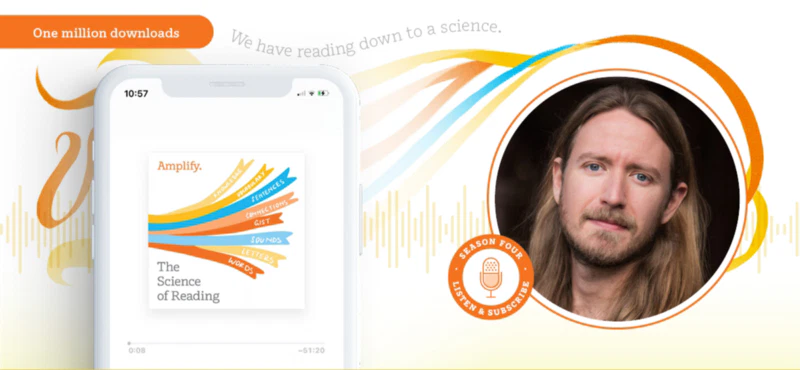
Welcome back to Science of Reading: The Podcast!
In the classroom, we’re continually looking out for our students and looking for ways to support their well-being and academic growth. But how often do we look at what we’re doing to take care of ourselves? And what does that look like for students and educators, having lived the past year and a half in a global period of stress during the pandemic?
Books have been some of my most meaningful companions … there’s a form of attachment that can occur between a reader and a story or a book that can actually be a safe space of refuge.
— Ricky Robertson
In this episode, we join Susan Lambert as she talks to Ricky Robertson about building systems of support for students impacted by Adverse Childhood Experiences (ACEs) and the educators who work with them. Ricky is an educator, author, and consultant who has worked with alternative and traditional schools. The episode focuses first on how teachers can prioritize their own self-care and why it is essential in order to care for students. Ricky then goes into explaining what ACEs are and the ways that fight, flight, freeze, and fawn responses can manifest in the classroom. Lastly, they go into explaining resilience and how routine and relationships help build a foundation for resilience — ending on a note of encouragement to educators that their investment is never wasted.
Listen Below!
For more research and wisdom on the best ways to teach reading, subscribe to Science of Reading: The Podcast.
Save your spot at our webinar series to discover how the Science of Reading is for everyone!
Science of Reading dos and don’ts
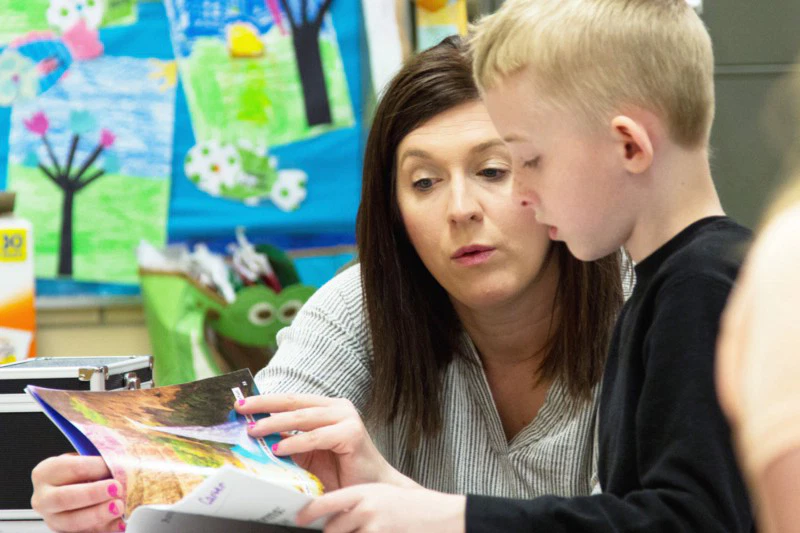
For classrooms and districts making the shift, understanding what a true Science of Reading curriculum looks like can be challenging. How do you know which instructional practices to adopt, which to avoid, and which ones are the real deal?
We’ve outlined five practices to start implementing today.
1. Use decodable readers.
Early readers need regular practice with grade-level text . Learning to read is not innate and must be taught through explicit, systemic instruction. Early readers need regular practice with grade-level text, especially text that’s connected to each day’s phonics instruction to helps students apply what they’ve learned.
Move away from level readers and curricula that have:
- A focus on predictable text or below-grade-level text.
- Decodable readers that don’t follow a clear phonics scope and sequence aligned to instruction.
2. Provide all students with dedicated phonics instruction.
Learning to read is not an innate skill. It must be taught through explicit, systematic instruction. An effective approach to phonics instruction provides enough time for teaching, application, and practice.
Shift from mini-lessons and curricula that have:
- Phonics instruction given only on an as-needed basis. When phonics is on an as-needed basis, students don’t get what they need to prevent reading difficulty.
- Students alternating between limited phonics, guided reading, writing, and vocabulary practice in a mini-lesson.
3. Help students with phonics-based scaffolds.
Learning to decode builds neural pathways that are critical to automatic reading. Students need practice sounding out words, not doing guesswork.
Transition away from three-cueing or word guessing and curricula that have:
- Prompts that encourage students to guess through three-cueing (e.g., “What word would make sense,” “what’s in this picture”).
- Predictable books that enable pattern memorization.
4. Teach content.
Language comprehension is as important as decoding. The more background knowledge students receive, the more prior knowledge and vocabulary they can bring to texts.
Limit use of isolated comprehension strategies and curricula that have:
- Limited time spent on each topic, or isolated topics introduced without connection to each other.
- Comprehension skill practice without a strong content foundation (e.g., asking students to “find the main idea” or “determine the author’s purpose” in disconnected texts).
5. Follow a clear instructional path.
Clear instructional paths offer explicit guidance and cohesive structure, the most beneficial—yet overlooked—elements of teaching reading effectively. A definitive instructional path (rather than a patchwork) enables components to build upon each other. This gets students the support they need right away, so they don’t have to wait for intervention.
Withdraw from “choose your own adventure” models and curricula that have:
- A model that provides multiple instructional pathways, which often lead to inconsistencies.
- So many pieces to their programs that it’s unclear how to implement each effectively.
The Reading Rope: Breaking it all down
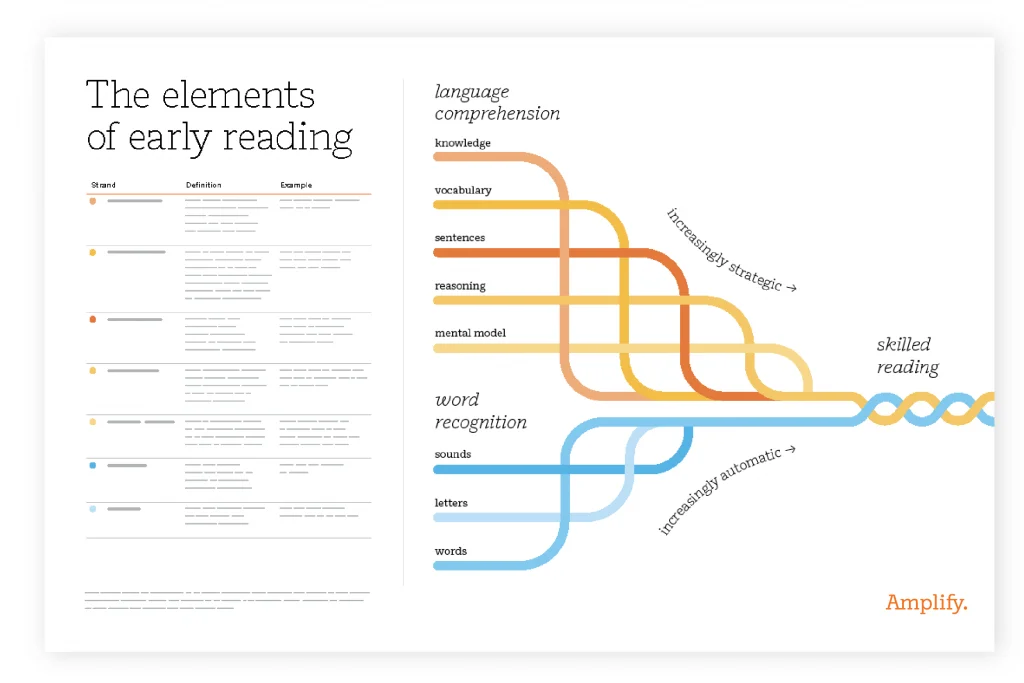
What do pipe cleaners have to do with learning to read?
In the late 1990s, reading and literacy expert Hollis Scarborough, Ph. D., used pipe cleaners to create a model of the intertwined skills that make up the process of learning to read.
That model is the iconic Reading Rope, the visualization that helps us understand the essential strands of reading and how they work together.
In this post, we’ll examine the components of the Rope both individually and together, then explore how the Rope aligns with the Science of Reading and the five foundational reading skills.
What is the Reading Rope?
The human brain is wired to do many things, but reading is not one of them. The brain does not automatically know that certain marks on a page or screen are designed to represent sounds, or meaning. That’s why we have to teach reading, explicitly and systematically.
And when we teach reading using what science—the Science of Reading—tells us, the brain wires itself to start recognizing and understanding those letters, syllables, and words.
The Reading Rope provides a visual representation of that process and all its essential, interrelated components.
Why is the Reading Rope important for the Science of Reading?
The Reading Rope emphasizes the need for a comprehensive, deliberate approach to reading instruction. It recognizes that reading is not a singular skill, but rather a set of interwoven processes.
By understanding and addressing each of these processes (known in the Rope as strands), educators can provide the targeted instruction that helps readers succeed.
How does the Simple View of Reading connect to the Reading Rope?
One of the research-based frameworks used in the Science of Reading is the Simple View of Reading.
According to the Simple View, two cognitive capacities are required for proficient reading: (1) word recognition and (2) language comprehension.
“Reading comprehension is the product, not the sum, of those two components. If one of them is zero, then overall reading ability is going to be zero,” says Jane Oakhill, Ph.D., professor of experimental psychology at the University of Sussex.
Those two skills make up the two meta-strands of the Rope. But, as Oakhill explains further on her episode of Science of Reading: The Podcast, each strand contains its own subset of distinct skills and processes.
What are the strands of the Reading Rope?
Let’s take a look:
- Word recognition encompasses the ability to accurately and swiftly decode printed words. Phonological awareness, phonics, and sight word recognition contribute to this strand.
- Phonological awareness is the ability to recognize and manipulate the individual sounds (phonemes) within spoken words. It includes skills such as identifying rhymes, segmenting words into syllables, and manipulating sounds within words. Phonological awareness provides the foundation for phonics instruction.
- Phonics describes the systematic relationship between letters and the sounds they represent. It includes understanding letter-sound correspondences, decoding unfamiliar words by applying sound-symbol relationships, and blending sounds to form words. Phonics instruction gives students the tools to decode printed words.
- Sight word recognition is the ability to recognize and read words automatically, without decoding. Building a repertoire of sight words boosts fluency.
- Language comprehension is the understanding of spoken and written language, including vocabulary, grammar, syntax, and the ability to make inferences and draw conclusions. Language comprehension allows readers to extract meaning from text.
- Vocabulary refers to the words one knows and understands, both orally and in writing. A robust vocabulary enhances comprehension and communication.
- Grammar and syntax are the rules and structures that govern language. Understanding and applying grammatical rules helps students comprehend and construct sentences, enhancing their ability to make meaning from text.
- Inference and conclusion skills describe the abilities of drawing conclusions, making predictions, and deriving implicit meaning. These skills require readers to combine their background knowledge with information in the text to make guesses and reach conclusions.
How do the strands combine to form a process?
These strands are interconnected and mutually supportive. Strong word recognition skills enable efficient decoding, which frees up cognitive resources for language comprehension. Similarly, robust language comprehension skills facilitate deeper word understanding and contextualized reading.
That’s how the Rope represents not just the elements of learning to read, but also the process toward fluency. As students progress, their word recognition becomes increasingly automatic, and their language comprehension becomes increasingly strategic.
- In the word recognition strand, readers focus on decoding individual words, relying on phonological awareness and phonics. With practice and instruction, word recognition becomes more efficient and effortless. This automaticity frees up cognitive resources for comprehension and higher-level thinking.
- In the language comprehension strand, readers learn to engage actively with the text, ask questions, make connections and predictions, and monitor understanding. Strategic readers use comprehension strategies—summarizing, visualizing, self-questioning, and more—to deepen their understanding of what’s on the page.
Those two processes are intertwined and interdependent. The Rope shows that, as readers progress, they get better at combining automatic word recognition with strategic reading skills.
They can effortlessly recognize words, allowing them to focus on comprehending the text and performing higher-level thinking. By strategically applying language comprehension skills, readers construct meaning, make connections, and analyze the text.
This combination of automatic and strategic skills supports reading and facilitates engagement with more complex and challenging texts.
How does the Rope relate to the five foundational skills of reading?
The Rope is made of a lot more than the five foundational skills of reading (phonics, phonemic awareness, vocabulary, fluency, and comprehension). How does it all add up?
While the Reading Rope does not explicitly mention these five skills as a distinct set, the strands do align with them. Here’s how:
- Phonological awareness (and phonemic awareness) is represented in the Rope’s word recognition strand.
- Phonics is also a critical aspect of word recognition.
- Fluency—often considered a combination of accuracy, rate, and prosody—is not represented as its own strand, but it’s closely related to the word recognition strand. As students develop automaticity in word recognition, their reading fluency improves.
- Vocabulary aligns with the language comprehension strand. The development of a robust vocabulary enhances reading comprehension by enabling students to understand and infer the meaning of words encountered in the text.
- Comprehension is built into the language comprehension strand. It includes skills such as understanding sentence structure, making inferences, drawing conclusions, and connecting prior knowledge. These skills help the reader get meaning from the text and connect to higher-level thinking.
The Reading Rope is a game-changing tool, clarifying a complex process and helping teachers target instruction. When the strands come together, they weave the strongest possible foundation for student reading success.
The #1 foundational skill for the Science of Reading
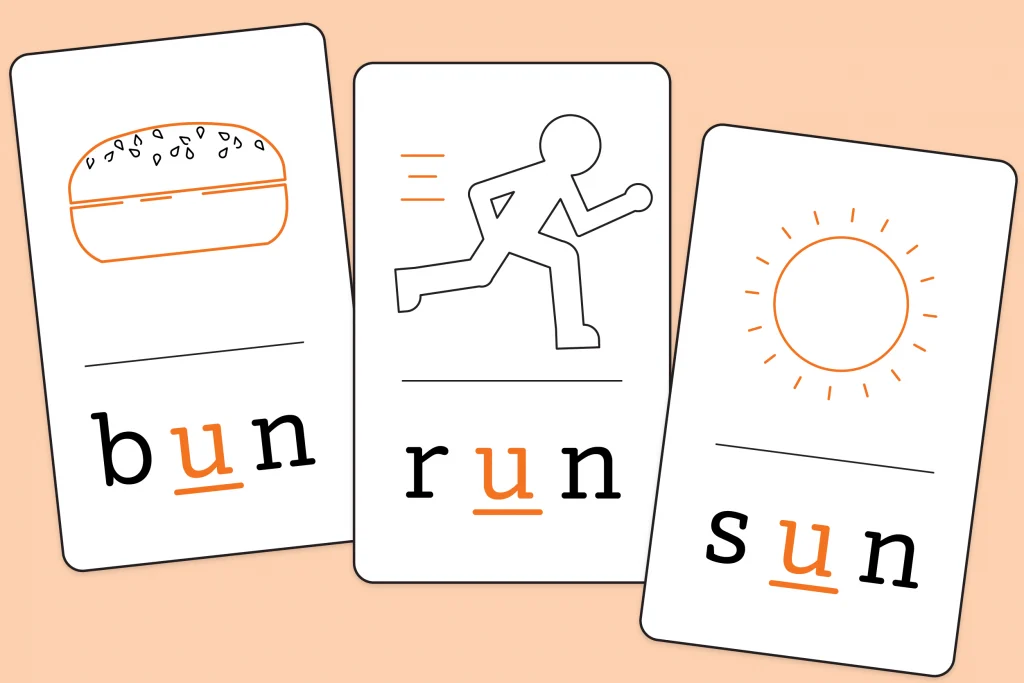
The first of five: Phonemic and phonological awareness
Phonemic awareness and phonological awareness—together, they’re the first of the five foundational reading skills articulated by the Science of Reading.
The two are intertwined, but not interchangeable. Even though they combine to form one skill, they have distinct meanings and play different roles in helping children become proficient readers.
In the first of this five-part series on foundational skills, we’ll look at where the path to literacy begins—and why it all starts with sounds.
What the Science of Reading tells us about the brain
First, an essential reminder: Our brains are not hard-wired for reading. They do not intrinsically know that marks on a page are designed to represent sounds, or meaning. That’s why reading must be taught, explicitly and systematically.
But when we teach reading using what science tells us, the brain wires itself to start recognizing those letters, syllables, and words.
“Reading comes through building new neural pathways,” says Alice Wiggins, vice president of instructional design and products at UnboundEd and our guest on Season 3, Episode 2 of Science of Reading: The Podcast. “That’s what happens,” she says, “when we’re taught to read.”
Why it starts with sound
The Simple View of Reading establishes that if you can’t decode the symbols (letters and combinations of letters) that make up a sentence, you can’t read it—even if you know the language in which it’s written.
And when it comes to spoken language, those symbols were created to capture sounds.
“Teaching kids that letters represent the sounds in speech has the most potent logic, because written language was invented to represent speech,” says Dr. Louisa Moats, an expert on how children learn to read and our guest on Season 3, Episode 3 of Science of Reading: The Podcast. “We don’t learn to talk from reading. We already know how to talk. We have to learn this system that is mapped onto speech.”
Phonemic awareness and phonological awareness form the building blocks for understanding the relationship between sounds and letters, paving the way for successful reading acquisition.
To understand how important they are, look no further than the Reading Rope, a visual representation of the key skills involved in reading. The strands of the rope represent various interconnected components, including phonological awareness, phonics, vocabulary, fluency, and comprehension.
Phonological awareness and phonemic awareness are positioned as the foundational strands.
To understand why, we’ll need to get more specific.
What is phonemic awareness?
Phonemes are the smallest units of sound that make up words. Phonemic awareness refers to the ability to identify and manipulate individual sounds (phonemes) in spoken words.
Phonemic awareness plays a vital role in the early stages of reading. By recognizing and manipulating individual sounds within spoken words, kids come to understand how sounds combine to form words.
This ability to segment and blend sounds lays the foundation for phonics, and the ability to decode and read unfamiliar words.
What is phonological awareness?
Phonological awareness encompasses a range of skills that go beyond manipulating individual phonemes. It includes abilities such as recognizing and manipulating larger units of sound, such as syllables, rhymes, onset and rime, and even entire words. It involves tasks like clapping out the syllables in a word, identifying words that rhyme, recognizing words with the same initial sound, and blending or segmenting words into syllables.
This awareness of larger sound units enhances readers’ ability to identify and manipulate individual phonemes. That, in turn, sets the stage for word recognition and decoding.
Phonology and equality
Alice Wiggins notes that just as reading skills start with sound, so does equality. It’s important to acknowledge that students speak and are exposed to a wide variety of pronunciations of English letters and words.
“Being explicit and systematic attends to those differences for all students,” she says.
More ways to learn
- Subscribe to Science of Reading the Podcast for the latest insights from researchers and practitioners in early reading.
- Explore our Science of Reading toolkit for dual language learners.
Science professional learning resources for teachers
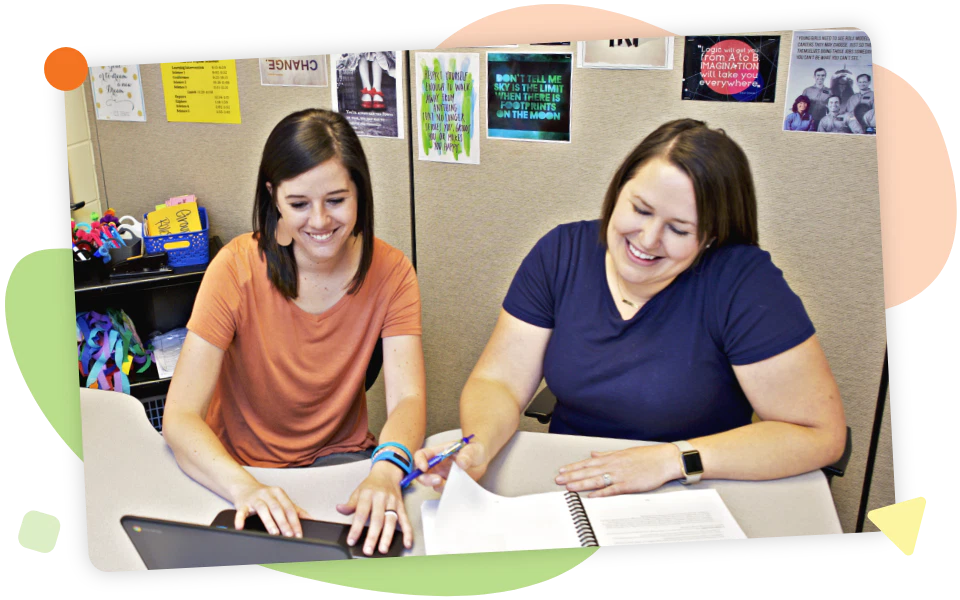
We hope you’ll take some time to rest and recharge this summer! But we also know how hard you work—even when school’s out—to do the best you can for the students in your science classroom.
Without the constraints of the school schedule, summer can be a great time for teachers to work on professional development!
That’s why we created this handy list of professional learning resources, mined from our trove of blog posts and webinars, for you to dive into this summer.
Science and literacy integrations
How should you approach the integration of science and literacy, and why is it important in the first place? Get all the answers in these posts and webinars:
- K–8 Literacy & Science Instruction Integration (webinar)
- ”Instructional strategies for integrating literacy into your science classroom” (blog)
- ”Integrating writing skills into science instruction” (blog)
- ”Integrating literacy in the science classroom” (blog)
- ”Science or literacy instruction? You don’t have to choose!” (blog)
- Finding Connections to K–8 Science & Literacy Educator Roundtable (webinar)
Next Generation Science Standards
These resources will help you learn about the Next Generation Science standards by grade level—and discover how to make them come alive in your classroom:
- Establishing a Culture of Figuring Out in Your Next Generation Science Classroom (webinar)
- Embedded and Immersive Engineering (webinar)
- Grade K–5 Science Program & Curriculum Overview—NGSS Curriculum
Phenomena in science
What’s phenomena-based learning in science? A method of exploring the everyday and observable that can also deliver extraordinary results. Learn more here:
- “The power of phenomena in the science classroom” (blog)
- What Is Phenomenon Based Teaching & Learning? (webinar)
- Phenomenon Based Learning in NGSS Curriculum (webinar)
- Supporting Student-To-Student Discourse in Science (And Beyond!) (webinar)
More to explore
The importance of decoding in effective phonics instruction

Early readers are like CIA analysts, using what they know about symbols and patterns to decipher unfamiliar texts and messages. And one of their most important code-cracking tools? Phonics.
In reading, phonics and decoding are closely intertwined. And the Science of Reading confirms that strong decoding skills help students sound out and decipher unfamiliar words, opening up new levels of reading and learning.
What’s the definition of “phonics”?
Phonics is a method for understanding the relationship between letters (graphemes) and the sounds (phonemes) they represent in words. It’s a crucial skill that helps students decode and read words accurately. The Science of Reading recognizes phonics as one of the five foundational reading skills—along with phonological awareness, fluency, vocabulary, and comprehension—that contribute to reading proficiency.
Phonics instruction focuses on teaching students the systematic and explicit rules and patterns of letter-sound correspondences. It typically begins with teaching the basic letter-sound correspondences, such as the sounds associated with individual letters or letter combinations (e.g., “a” as in apple, “sh” as in shell).
As students progress, they learn more complex patterns and rules, such as vowel digraphs (two vowels together producing a single sound, like “ea” in beach) and consonant blends (two or more consonants together, like “bl” in black).
Decoding in reading
Decoding is a key part of phonics instruction—and a vital skill that helps students unlock meaning. It’s what students are doing when they use phonics skills to sound out words, breaking them down into individual phonemes or letter sounds.
By understanding the relationship between letters and sounds, students can apply their knowledge to decode new words. For example, knowing that the letter “s” represents the /s/ sound allows students to decode words like sit or sun based on their knowledge of phonics.
(A note on encoding vs. decoding: While decoding focuses on translating written words into spoken language, encoding refers to the ability to convert spoken language into written words.)
Why is decoding important—especially when combined with phonics?
Decoding skills are fundamental because they bridge the gap between recognizing individual letters and understanding the meaning of words. Phonics instruction is most important when it teaches and reinforces decoding skills.
Together, the two accomplish a lot:
- Building word recognition: Decoding skills enable students to recognize words accurately and independently. By applying phonics knowledge, students can decode unfamiliar words, expanding their word-recognition abilities.
- Enhancing reading comprehension: Decoding is an essential component of reading comprehension. When students can decode words effectively, they can focus on understanding the text, making connections, and engaging in critical thinking.
- Boosting independence: Decoding skills help students tackle unfamiliar words on their own without having to rely as much on context or memorization.
Phonics and decoding activities
To reinforce decoding skills, educators can incorporate various phonics and decoding activities. These might include word blending exercises, word family practice, phonics games, or guided reading sessions.
Phonics instruction gives students the tools to recognize and understand the relationship between letters and sounds. Decoding skills allow them to apply this knowledge to reading words accurately and independently. When educators explicitly teach phonics and reinforce decoding skills, they set students up to engage with the unfamiliar, expand their vocabularies, and become confident and curious readers.
More Amplify and Science of Reading resources
Science of Reading, A Primer: Part One
Science of Reading: Your guide to making the shift
Science of Reading: The Podcast “Deconstructing the Rope: Decoding with Louisa Moats”
Foundational skills instruction in Boost Reading
Free professional learning opportunities for math educators
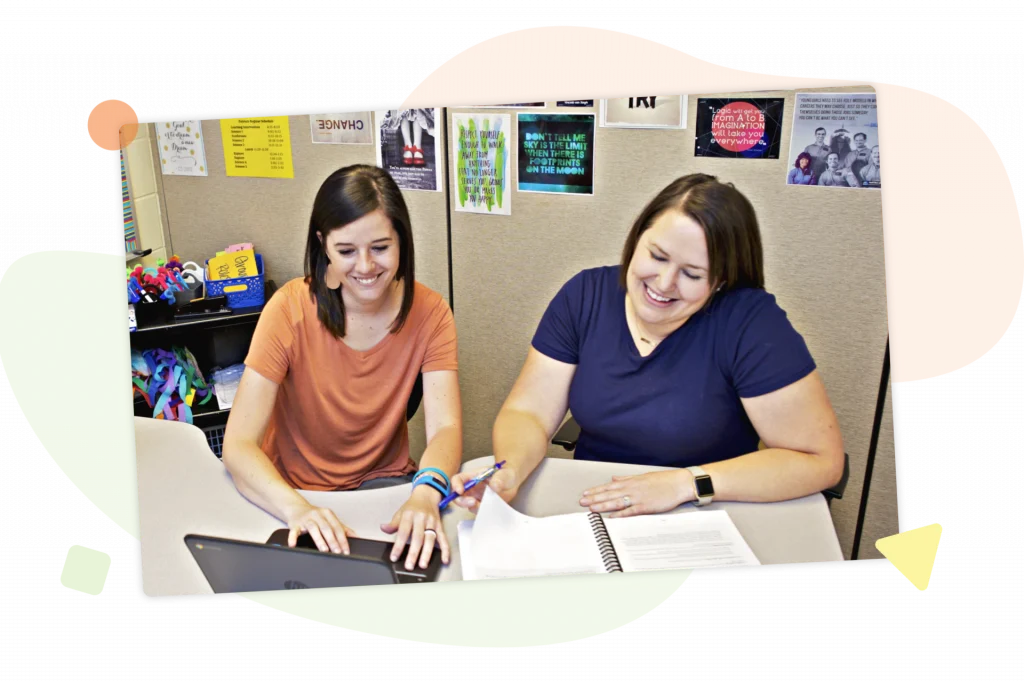
We hope you’ll take some time this summer to refresh your energy—and your math teaching skills and knowledge. We’re here to help with these professional learning opportunities for math teachers.
Culled from our trove of blog posts and webinars, we’ve compiled a list of math teacher resources covering topics from technology in the math classroom to math anxiety and more. We hope your down time and your math time add up to a great summer!
Diving into math curriculum
As math teachers, you work every day to celebrate student brilliance, build deep conceptual understanding, and create the conditions for every student to be successful. Find out how Amplify Desmos Math can help with these resources.
Desmos Classroom
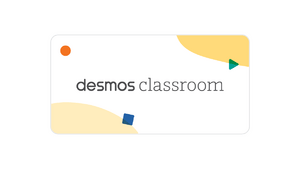
This four-part webinar series will give you the tools you need to go from platform novice to skilled Desmos Classroom whiz.
- Introduction to Desmos Activities—Desmos Classroom—Grades 3–12 (Beginner)
- Introduction to Activity Builder—Desmos Classroom—Grades 3–12 (Intermediate)
- Desmos Dashboard Deep Dive—free math platform & resources (Intermediate)
- Intro to Computation Layer—Desmos Classroom—Grades 3–12 (Advanced)
What amazing math looks like
How can you help students both learn math and love math? Examine what amazing math looks like for both educators and students in this webinar series that explores the importance of focus, engagement, and collaboration. Start with our special kickoff webinar presented by math expert Dan Meyer, host of Math Teacher Lounge, then binge-watch our webinars on next-level math engagement!
- 6–8 Grade Math Focus—Middle school math resources
- 6–8 Grade Math Engagement—Middle school math resources
- K–12 Math Collaboration—Student & teacher math resources
Desmos Math 6–A1

Learn about the EdReports process for evaluating high-quality instructional materials (including Desmos Math 6–8) in a post from our blog, then check out our info session and Step Ahead webinars to learn more about the program—and see it through the eyes of math students!
- Desmos Math 6–8 earns perfect scores from EdReports
- Desmos Math 6–A1 Info Session—Learn about our middle school math curriculum
- Step Ahead with Desmos Math 6–A1 & Kelly Serpa Howe—Grade 6 math lesson & curriculum demo
- Step Ahead with Desmos Math 6–A1 & John Hoogestraat—Grade 7 math lesson & curriculum demo
- Step Ahead with Desmos Math 6–A1 & Oscar Perales —Grade 8 Math Lesson & Curriculum Demo
- Step Ahead with Desmos Math 6–A1 & Maria Flores-Iavarone—Algebra 1 math lesson & curriculum demo
Creating a math community
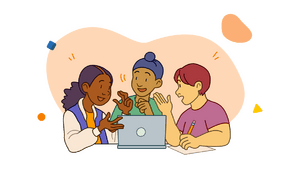
As any mathematician knows, there’s strength in numbers! The following posts, all from the Amplify blog, will help you build a culture of collaboration and community in your math classrooms.
- “Math strategies that build community in your classroom”
- “Centering students in math curriculum adaptations”
- “Identifying math anxiety”
- “The power of technology in the math classroom”
Summer is one of those good things that must come to an end. But when it does, we hope these resources will have helped you feel more prepared than ever for a magical year of math!
Top 5 back-to-school tips for science teachers
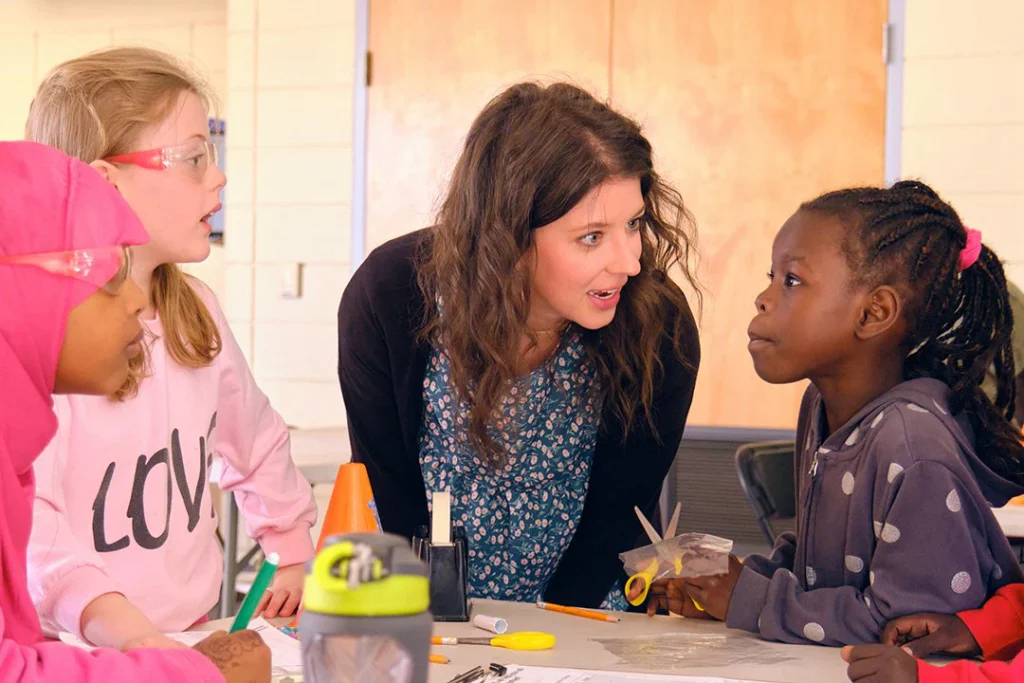
Science teachers: We got you.
“Teaching through a pandemic called for so much innovation, resilience, and sacrifice,” says Eric Cross, host of the podcast Science Connections and a K–8 science teacher who’s spent 10 years in the classroom.
As education continues to evolve with new technologies like artificial intelligence, [teachers] keep rising to meet each moment with wisdom and courage.
—Eric Cross
And with that innovation in mind, we’re here to get you ready to go back to school.
From fun classroom activities to professional learning opportunities, our strategies are designed to help you walk back into your science classrooms feeling energized, inspired, and supported by a science community.
As Cross says: “We’re all in this together.”
1. First-day fun: Plan interactive classroom activities. How about some Icebreaker Bingo? Create a Bingo card that invites students to find classmates who can answer “yes” to science-related descriptions (e.g., “Has a pet reptile,” “Enjoys stargazing”). Activities like these help students uncover common interests while also providing background knowledge. They can also remind students that science doesn’t just happen in the science classroom—it’s an integral part of their lives and worlds, too.
2. Student success: Work with school colleagues and leadership toward shared goals. Review what systems may already be in place and consider adding more. You might:
- Schedule regular team meetings to set and work toward common goals.
- Establish a professional learning community to share science resources for teachers.
- Amp up the use of data to inform decisions. Ask your team: What student performance data and assessment results can we use to see where improvements are needed?
Approaches like these will help build a network of support for science learning, and support every educator in taking steps to help students grow.
3. Set the tone for the year: We are scientists. You might have learned science by starting with a principle and then exploring it in the real world. Today, we know it’s more effective to start by observing a phenomenon, then trying to predict or explain it. In fact, that’s what scientists do. And when your students do that, they become scientists, too. Let students know from day one that that’s who they are to help them start the year motivated and engaged.
4. Cultivate community: Build a science ecosystem. Find ways to involve caregivers in student learning and create a continuum between the classroom and their everyday lives. You might:
- Collaborate with students on writing a weekly science newsletter or blog with classroom updates and suggested at-home activities.
- Organize family science days or nights (IRL or online) for students and caregivers to do some hands-on science together.
- Create simple but engaging science challenges for students and caregivers to do together. (Paper airplane distance contest, anyone?)
5. Use free professional learning opportunities for teachers from Amplify Science. Explore upcoming Amplify Science webinars, designed to support you—along with your schools and districts—in using collaborative, effective, and engaging science practices in the classroom. You’ll hear from thought leaders in science education, observe real science students in K–5 classrooms, and much more.
Ready to dive into professional learning right away? Check out our on-demand science webinar library. From quick tips to longer continuing education (CE) credit options, our on-demand webinar library is sure to have just what you need.
Free science resource toolkit
Our free toolkit of science resources will make it even easier for you to implement all of the tips above while setting science students up for success. These resources aren’t just for teachers—administrators and caregivers can use them, too! A robust science program means giving the right tools to not only those who teach, but everyone who supports students’ science learning. The resources in the toolkit will:
- Help you craft a dynamic science curriculum during the crucial first weeks of school.
- Support student engagement and spark new inspiration in your classroom practices and activities.
- Offer learning opportunities you can access now or on demand whenever you need them.
We hope these resources will serve you and your young scientists all year long!
More to explore
Embracing artificial intelligence in the math classroom
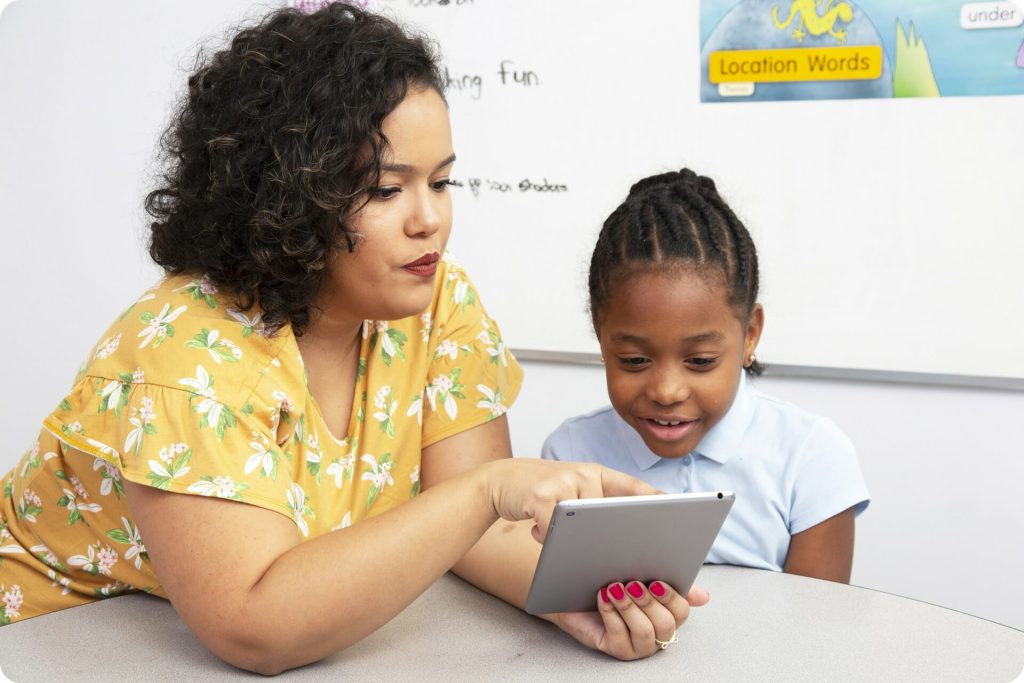
Artificial intelligence seems to be everywhere these days. We use it when we ask Alexa or Siri for the morning weather report. We use it when GPS tells us how to best avoid traffic. We use it when we chill at the end of the day with a recommendation from Netflix.
But what about during the day—and specifically, at school? Even more specifically, can AI be leveraged to enhance the math classroom?
“While AI is an amazing tool, you’ve really got to make sure that you are focusing in on your expertise as well,” says veteran math educator and STEM instructional coach Kristen Moore, “And saying, ‘How can I use this to make something better?’ and not just, ‘How can I use this to make something?’”
In this post, we’ll talk about the current state of AI in math education, and how it can support educators in making math better. (SPOILER: It’s not going to replace you!)
First, some STEM learning for us: What is artificial intelligence?
Artificial intelligence, or AI, refers to the development of computer systems able to perform tasks that typically require human intelligence.
It involves creating algorithms and systems that enable computers to learn from data, adapt to new situations, and make decisions or predictions.
AI aims to mimic human cognitive functions such as understanding language, recognizing patterns, solving problems, and making decisions. It encompasses a range of techniques and technologies, including machine learning, neural networks, natural language processing, and robotics.
The term “artificial intelligence” was introduced in 1956. The availability of vast amounts of data and advancements in computer power in the 2010s led to additional breakthroughs. And with the proliferation of smartphones, smart devices, and the internet, AI technologies began to work their way into our homes, cars, pockets, and everyday lives.
What’s the state of AI in education?
AI is already commonplace in schools and classrooms. Here are just a few examples:
- Adaptive learning: This software uses AI algorithms to adjust the difficulty and content of lessons based on a student’s performance, helping students remain engaged and challenged at their optimal level.
- Assistive technologies: AI helps students with disabilities by providing assistive technologies like text-to-speech and speech-to-text tools, making educational content more accessible.
- Plagiarism detection: These tools use AI algorithms to identify instances of copied or unoriginal content in students’ assignments, essays, and projects.
- Data analysis for teachers: AI analyzes data from student assessments to identify trends and insights, helping teachers make informed decisions about instructional strategies. It can also predict students’ performance trends, helping teachers identify at-risk students early and intervene to provide additional support.
- Grammar, spelling, and style checkers: AI can provide real-time feedback to students (and teachers!) on their writing work.
Embracing AI technology in your math classroom
While AI is not here to replace teachers, it is here to stay. And experts say it’s only going to become more commonplace. But despite how common AI is already—both outside and inside school—not all teachers are familiar with its numerous applications and potential. Now is a great time for educators to start exploring its uses and get ahead of the curve.
Here are a few easy entry points for math teachers.
ChatGPT: A common AI tool, ChatGPT is designed to understand and generate human-like text based on the input it receives. It’s trained on a wide range of internet text, which enables it to generate responses to a vast array of prompts and questions.
Most students have likely experimented with ChatGPT, while teachers—though aware of it—are less likely to use it. ChatGPT has highly practical applications for both groups, though—including in the math (and science) classroom.
It can, for example, help teachers plan interesting, relevant math lessons for their students. Kristen Moore, who discusses this topic on Math Teacher Lounge, suggests that math teachers use ChatGPT to:
- Connect topics to student interests and vice-versa. (Teachers can ask ChatGPT for real-life applications of polynomials and select those that might pique student interest, or ask about math applications derived from students’ hobbies and pursuits.)
- Generate word problems (including step-by-step solutions), lessons, projects and rubrics, and more.
Toward the (near) future
As AI advances, it will continue to revolutionize education. Here are a few time-saving ways that educators can look forward to using it in their classrooms.
- AI tutors: AI-powered virtual tutors will help math students with homework questions and provide explanations for various concepts. These tutors can be available at home 24/7, allowing students to seek an AI homework helper whenever they need it.
- Automatic graders: Some AI tools can automatically grade math work, including multiple-choice and short-answer assignments. These tutors can be available at home 24/7 in any household with internet access, allowing students to seek more personalized instruction.
- Personalized learning paths: These AI-powered platforms will work particularly well for math students by adapting to each student’s skill level and pace, offering tailored exercises and challenges that cater to their strengths and identify areas of improvement. They will analyze students’ performance and adjust the difficulty of content, ensuring that students get targeted support and opportunities to progress.
More to explore
To dive deeper into AI in math education—and get rolling with AI in your classroom—check out this two-episode mini-series on our Math Teacher Lounge podcast focused on just that:
- Season 5, Episode 7: Discerning the role of AI in education with former teacher, current education technology entrepreneur, and general partner at Reach Capital Jennifer Carolan, who has a lot to share about how AI can partner with educators to foster social learning opportunities.
- Season 5, Episode 8: Utilizing AI as a teaching tool with educator Kristen Moore, who discusses how she uses ChatGPT to revolutionize student learning and streamline lesson planning.
“I’m a believer that learning is inherently social,” says Carolan, who is quick to emphasize how technology can enhance that quality, not replace it. The same can be said for the role teachers play in the classroom—a role technology can support, but never take away. To learn more about this topic (and discuss it with your fellow educators!), head to our Math Teacher Lounge community!
The importance of vocabulary in effective literacy instruction
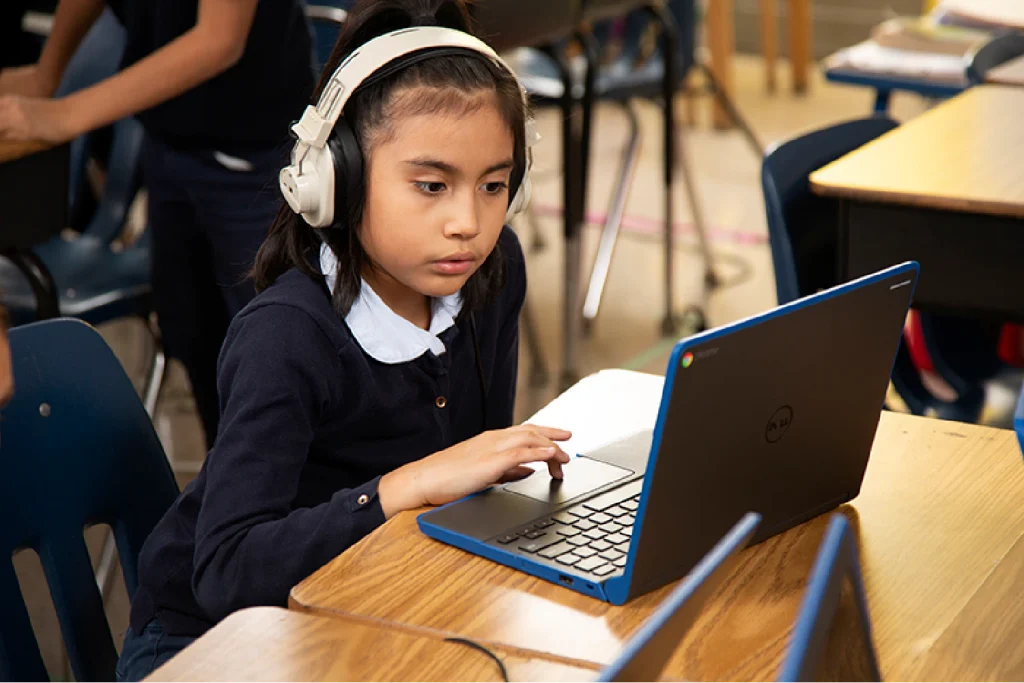
When you learn to read, you don’t learn just to pronounce words—you learn to understand them, and how they work together to convey meaning. In fact, it almost goes without saying that vocabulary is an essential, non-negotiable building block of literacy.
But there’s actually a lot to say about vocabulary. And in the context of literacy instruction, it’s about much more than memorizing and amassing words and definitions.
If there’s one word we need to better understand to explore the importance of vocabulary, it’s…vocabulary. So let’s explore the word’s full definition, as well as how it fits into best practices in literacy instruction.
Why is teaching vocabulary important?
Vocabulary is one of the five foundational skills in reading and a key strand in the Reading Rope. As a word, it refers to the collection of words that we understand and use in language.
Vocabulary includes both the words we recognize and comprehend when reading or listening (receptive vocabulary) and the words we can use accurately and effectively when speaking or writing (expressive vocabulary).
But our vocabulary isn’t just a list of words and their definitions. “Words are interrelated,” says Nancy Hennessey, former president of the International Dyslexia Association, on Science of Reading: The Podcast. “We’re storing words in networks of meaning.”
Entwined in those networks is background knowledge. We can memorize words in a vacuum, but they’re not really part of our vocabulary until and unless they’re grounded in what we know.
“Background knowledge and vocabulary are the main support beams in the comprehension house,” says Hennessey.
How to teach vocabulary as students grow
First, it’s important to note that tactics and emphasis can and should shift as readers develop skills. As Hennessey notes, we can measure vocabulary in terms of both breadth and depth. These elements play distinct yet complementary roles in literacy development.
Vocabulary breadth refers to the sheer number of words a reader knows and recognizes. A broad vocabulary enables readers to understand a wide range of texts and communicate effectively in various contexts.
In the early stages of reading development, educators might emphasize increasing vocabulary breadth—exposing readers to diverse texts, books, conversations, and experiences. In this way, new readers start building a foundation of familiar words that they can understand and use.
As students learn more, instruction can shift from breadth to depth. Here’s where educators dig into the intricacies of word meanings—exploring synonyms, antonyms, contexts, and connotations. A deep vocabulary allows readers to grasp subtle nuances in language and engage in more sophisticated forms of expression and comprehension.
Vocabulary activities and instruction
Hennessey has developed a four-pronged approach to vocabulary instruction, grounded in the Science of Reading. The four prongs are:
- Intentional instruction: explicitly teaching the meaning of specific words.
- “Incidental-on-purpose” instruction: helping students understand new words as they come up.
- Intentional teaching of independent word learning strategies: giving students tools to help them determine the meaning of words on their own (e.g., using morphology, context clues, or even glossaries).
- Development of “word consciousness”: getting students interested in how words work to convey meaning, uses of figurative language, etc.
“These approaches are based on the fact that we know we need to explicitly teach words,” Hennessey says, “but we also need to continue developing vocabulary through oral experience and reading, because we can’t teach all the words that our students need to know.”
In the context of literacy development, vocabulary instruction is not rote memorization of lists of words. And, according to Hennessey, that’s not the way kids relate to it either. Students bring natural interest and curiosity to exploring figurative language, playing with palindromes, and finding and learning what she calls “$20 words.”
When we integrate these activities into incidental or incidental-on-purpose instruction, Hennessey says, “we can embed this excitement and understanding of how words play such an important role in our lives.”
More to explore
The importance of reading fluency in effective literacy instruction
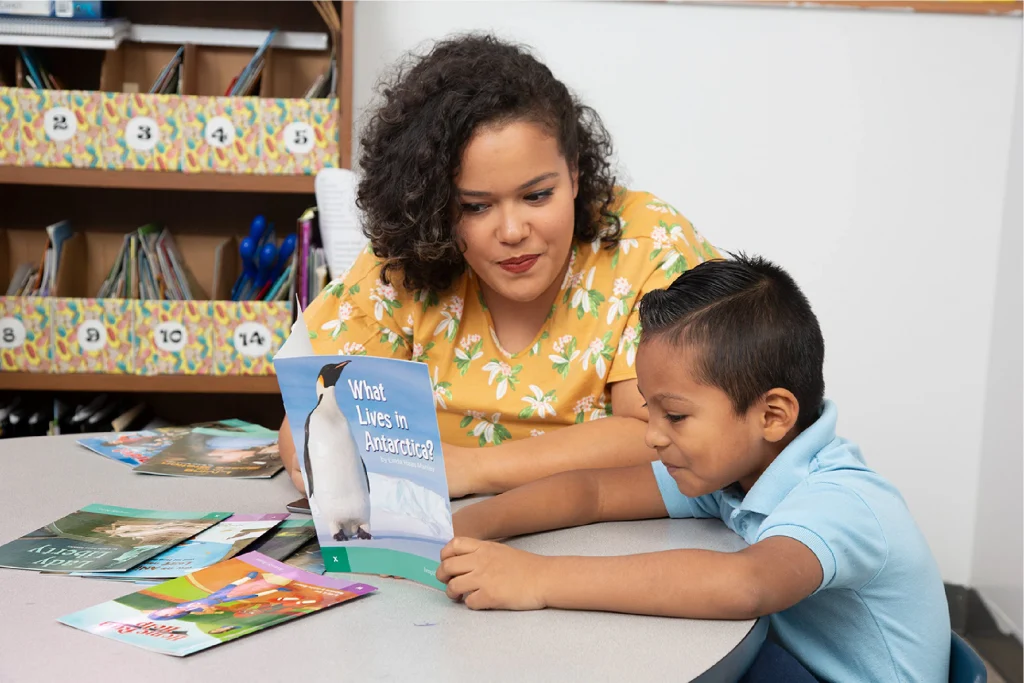
There’s a difference between the ability to sound out words on a page and the ability to truly understand their meaning. That difference? Reading fluency.
Fluency is one of the five foundational reading skills. (The other four, as you likely know, are phonological awareness, phonics, vocabulary, and comprehension.) Fluency connects readers not just to words, but to emotions and expressions, characters and connotations. And it’s also where reading really starts to foster joy.
In this post, we’ll explore what fluency is, why it matters, and how to successfully incorporate it into your literacy instruction.
Defining fluency
The International Literacy Association defines reading fluency as “reasonably accurate reading, at an appropriate rate, with suitable expression, that leads to accurate and deep comprehension and motivation to read.”
In other words, fluency is not just reading fast. And it goes beyond merely decoding words, to developing a deep understanding of what they’re trying to say. Fluency allows readers to connect ideas, recognize patterns, and infer meanings.
“I call fluency the bridge to comprehension,” says Kent State literary education professor Tim Rasinski, discussing the topic on Amplify’s Science of Reading: The Podcast.
Why fluency in reading matters
Rasinski is also director of Kent State’s award-winning reading clinic, and in his podcast episode, he describes encountering students as old as grade 5 who have decoding skills, but not fluency. “[These students] can sound words out, but if you were to hear them read orally, it would be slow, laborious reading in a monotone,” he says. According to Rasinski, these students aren’t getting “much joy and satisfaction, or even comprehension” from their reading.
While oral expression in reading is not the ultimate goal, it is an indicator. “The way you read orally reflects the way you read silently,” Rasinski says. “Most of us would say when we read silently we ‘hear’ ourselves with our internal voice.”
When readers develop fluency, they also develop:
- Comprehension. As decoding becomes more effortless, readers can focus on understanding meaning. Fluent readers recognize words automatically, allowing them to dedicate cognitive resources to complex sentence structures and connections among ideas. They grasp both main points and nuances. All told, they get what they’re reading.
- Confidence. Fluent readers are more likely to feel accomplished, proud, and motivated with regards to their reading abilities. And it’s a virtuous cycle: As their confidence grows, they’re more likely to engage in and enjoy reading—and continue to improve.
- Vocabulary. Fluency plays a significant role in vocabulary acquisition and language development. Fluent readers encounter a larger variety of words in context. This exposure enhances their language and communication skills across academic topics and life experiences.
- Academic success. Fluency helps students read to learn. As students advance through school, fluency becomes increasingly important for comprehension and analysis of more advanced and content-rich texts.
- Emotional connection. Fluency enables readers to connect with the characters, emotions, experiences, and implications in a given text. That’s what makes reading immersive and enjoyable—in the moment and for a lifetime.
The fluency journey: learning and assessment
The Science of Reading tells us that foundational reading skills must be taught explicitly and systematically, and fluency is no exception. Developing reading fluency is a gradual process that requires consistent practice and exposure to different types of texts. There are several stages and skills that support the development of reading fluency.
- Fluency starts with accuracy in decoding. As students practice and improve their phonics skills, they can accurately recognize and decode more and more words. This helps them move from laborious reading toward more efficient reading.
- Speed comes as a result of accuracy. As students become more accurate in decoding, they can read words more quickly. Accuracy helps reduce the time it takes to identify and process each word, allowing for a smoother and faster reading experience.
- Fluency practice helps with automaticity. And the more students develop both accuracy and speed, the more they develop automaticity.
As you may know, there’s a tool called Oral Reading Fluency (ORF) that reading professionals use as a quick-read thermometer of sorts to measure reading speed and accuracy. It’s a simple assessment, measuring how many words a student reads correctly in an unpracticed passage. It’s considered one of the best indicators of a student’s reading progress.
“It works! It has validity. It gives us good, useful information,” says researcher, educational consultant, and author Dr. Jan Hasbrouck on Science of Reading: The Podcast. That’s why it’s widely used—but, she adds, it’s also widely misunderstood.
It is a reliable and helpful measure of fluency in terms of reading rate and accuracy, she says. At the same time, “It was unfortunate to put the label ‘fluency’ on it,” she says. “We reading teachers think of fluency as something much more multifaceted and complex that at minimum includes prosody, or expression. It is accuracy, rate, expression, metacognition, background knowledge—it’s all of this stuff that really experienced reading teachers think of as fluency.”
Fluency best practices for literary instruction
Automaticity frees up cognitive space for comprehension, but fluency isn’t just about reading fast—it’s also about making meaning, which is where prosody comes in.
Prosody refers to the rhythm, intonation, and expression used by someone reading aloud.
But it’s not just for the natural performers in the classroom. Prosody can be influenced. How do we help students develop that external, and internal, prosodic voice?
Through targeted read-aloud practice. By explicitly teaching students about prosody and providing systematic practice opportunities, educators can nurture fluency and comprehension simultaneously—a connection to overall reading success that is well-supported by evidence-based research.
Some fluency strategies include:
- Reader’s Theater in the classroom: Students don’t have to be skilled actors to take on roles and read from scripts. Theater activities allow them to practice recognition and expressions of drama and emotion as they bring the lines to life.
- Assisted reading: When students read aloud simultaneously with a more fluent reader, they practice their own skills while also hearing someone else make meaning of the same text. This can also take the form of choral reading, i.e., students reading aloud as a group, focusing on using appropriate intonation and expression. Reading together allows them to practice prosody in a supportive and collaborative environment.
- Consistent reinforcement and rewards: Rasinski works with students on snippets of text, first with prosody modeled by teachers, then practiced alone and together (repeated reading), then performed for each other or even parents or other adults who offer praise. This regular practice helps boost the confidence and motivation that assists students in developing fluency. “We want children to experience reading success every single day,” says Rasinski.